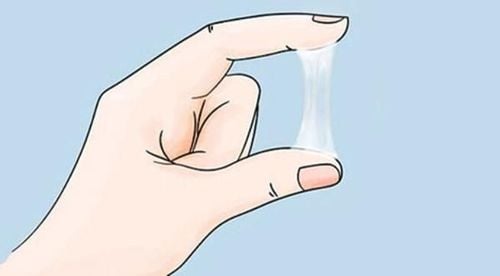This is an automatically translated article.
Puberty is a process of physical changes, the child will develop into an adult body capable of reproduction. Puberty in boys is initiated by hormonal signals from the brain to the gonads. In response to the signals, the gonads produce hormones along with the development of the brain, bones...1. When does puberty start?
Puberty is a time when reproductive organs and other body systems develop and mature rapidly. A child's brain also undergoes changes at this time, affecting his emotions and behavior.
For boys, puberty begins around age 11 to 13 and lasts for several years. The most important thing to remember is that everyone is different so the timing of puberty will vary between boys, as early as 9 years old or as late as 14 years is still considered normal. The key milestone that determines the onset of puberty in boys is the first ejaculation, which occurs on average at the age of 13.
Boys go through many important changes during puberty. The boy's body grows larger, his voice changes, becomes stronger and begins to mature in sex. Some mature faster than their peers or the physical changes are gradual. Physical changes are different for each individual.
2. Signs of puberty in boys
2.1. Body shape development Most boys experience a dramatic increase in height that occurs during the later stages of puberty (when other physical changes, such as genitals, body hair growth, and voice changes). Boys can grow 10-30 cm taller between the ages of 18 and 20 years old.
Towards the end of puberty, adult males have heavier bones and almost twice as much muscle. Muscles develop mainly during the later stages of puberty and even as boys mature biologically.
Guys need to know that everyone grows in height and muscle at different rates, so it's best not to compare yourself to your friends. The rate of growth depends on sleep patterns, exercise habits, nutrition and family genetics.

Dấu hiệu dậy thì ở bé trai được bắt đầu bởi tín hiệu nội tiết tố từ não đến các tuyến sinh dục
2.2. Testicles and Penis Resize Enlarged testicles are the first physical manifestation of the signs of puberty in boys. The testicles in prepubertal boys are less variable in size with an average length of about 2–3 cm and width of 1.5–2 cm. Changes in the size and shape of the genitals usually begin between the ages of 9-14. It is normal for one testicle to grow faster or hang lower than the other and is nothing to worry about.
The testicles make a hormone called testosterone. Testosterone is responsible for the signs of puberty in boys such as hair growth, voice changes and muscle growth, including an increase in the size of the testicles and penis.
Boys will also notice that the penis gets bigger and longer during puberty, and the glans and corpus cavernosum also begin to enlarge to adult proportions. There is also a retraction of the foreskin to the base of the penis during this development.
Genitals, emotions, testosterone all change together during puberty, and it's normal for boys to start having sexual feelings for others during puberty.
Penile erection is a normal change for boys during puberty. It usually lasts a few minutes, occurring spontaneously at any time of day. Spontaneous erection also called involuntary erection can sometimes embarrass boys but the most important thing is how they deal with it if they are at school or in public.
Besides, the boy's first ejaculation is an important milestone in the development process. On average, the first ejaculation in boys occurs at the age of 13, ejaculation sometimes occurs during sleep - known as dream ejaculation.
2.3. Body and Face Hair Growth of pubic hair is one of the hallmarks of puberty in boys, usually appearing shortly after the genitals begin to develop. The pale filaments usually appear first at the base of the penis. Over the next few years, it covered the pubic area, then gradually spread toward the thighs and a thin line of hair up to the navel. About 2 years after pubic hair appears, thinning hair begins to grow on a baby boy's face, legs, arms, armpits and later chest.
In the months and years after pubic hair appears, other areas of skin that react to male hormones can grow hair, the most common locations being the armpits, around the anus, on the mustache, around the ears and beard. The hair on the arms, legs, chest, abdomen and back gradually becomes thicker and darker.
2.4. Voice changes Most voice changes occur during the 3–4 years of puberty in boys. Under the influence of androgens, the vocal cords and larynx develop in both sexes. This growth is much more prominent in boys, causing the male voice to deepen, or “crash,” to sound timid.
2.5. Breast development Normally, fatty tissue in male nipples and tissues develops during puberty as a result of a biochemical reaction that converts some testosterone into the female sex hormone - estrogen.
Sometimes (usually on one side) breast tissue grows larger than usual and is called gynecomastia, especially in overweight boys. However, this usually won't last long.

Lông trên cơ thể và khuôn mặt là dấu hiệu dậy thì ở bé trai mà các bậc cha mẹ thường chú ý đế
2.6. Mood changes in boys When going through puberty, mood can change more, this is a sign of puberty in boys that parents often pay more attention to. One minute they may feel happy, the next they feel sad. This is normal and occurs due to hormonal changes during puberty.
Encourage your child to try things like going for a walk, exercising, talking to a friend or an adult that helps manage these emotions.
If parents are concerned about a boy's progress through puberty, talk to his doctor to determine if your child is growing and developing as expected. Children are growing and this also means they may open up less to you. Always keep an open mind and talk about the changes your child is going through.
Please dial HOTLINE for more information or register for an appointment HERE. Download MyVinmec app to make appointments faster and to manage your bookings easily.













